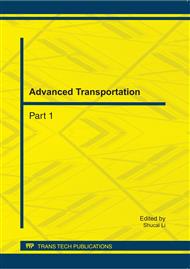p.981
p.985
p.990
p.994
p.1003
p.1007
p.1015
p.1022
p.1027
A Critical Review of the Istanbul Strait Transportation Policies
Abstract:
Istanbul is the major city of Turkey and is a typical large urban settlement facing serious problems of transportation. Amongst the others, Istanbul is unique in a way that the Istanbul Strait (Bosporus Strait) separates the metropolitan area into two main land areas creating a bottleneck and crucial traffic problems along a very strategic corridor between the two continents, Asia and Europe. The construction of the First Bridge (1973) and the Second Bridge (1988) and their beltways have highly influenced the travel and spatial development patterns in the city. Besides, the two Bridges have long been one of the main sources of traffic problems and a number of infrastruture developments, under construction or planned, will be provided for the allevaition of the congestion across the two sides of the city. However, there is an increasing call for better policy integration and evaluation in order to better fit with the aims of sustainable mobility. In this policy sense, this paper discusses the past and current policies concerning the Istanbul Strait crossings which is a very special case of urban planning and policy making practices.
Info:
Periodical:
Pages:
1003-1006
Citation:
Online since:
September 2011
Authors:
Price:
Сopyright:
© 2011 Trans Tech Publications Ltd. All Rights Reserved
Share:
Citation:


